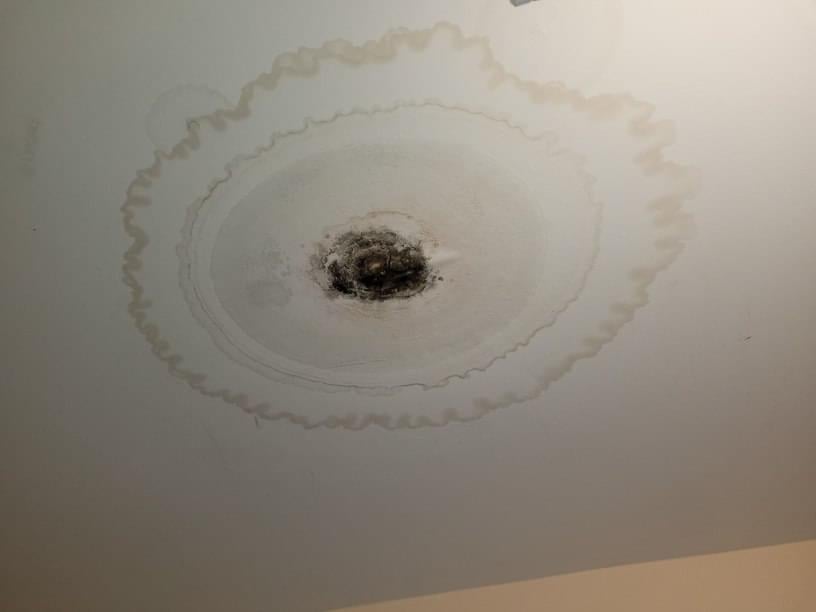Guide To Water Leak Detection In Your Home
Guide To Water Leak Detection In Your Home
Blog Article
They are making a number of great pointers related to Locating water leaks in general in this post underneath.

Early discovery of leaking water lines can minimize a prospective disaster. Some tiny water leakages might not be visible.
1. Check Out the Water Meter
Every house has a water meter. Checking it is a surefire way that aids you discover leaks. For starters, shut off all the water resources. Make certain no one will certainly purge, make use of the faucet, shower, run the washing maker or dishwashing machine. From there, most likely to the meter as well as watch if it will certainly transform. Considering that nobody is using it, there need to be no movements. That suggests a fast-moving leakage if it moves. If you discover no modifications, wait a hr or two and examine back again. This indicates you may have a slow-moving leak that could even be underground.
2. Inspect Water Intake
If you identify abrupt changes, in spite of your consumption being the same, it implies that you have leakages in your plumbing system. An unexpected spike in your bill shows a fast-moving leak.
On the other hand, a constant increase every month, even with the exact same practices, shows you have a slow-moving leakage that's additionally gradually rising. Call a plumber to thoroughly check your property, particularly if you feel a cozy area on your floor with piping beneath.
3. Do a Food Coloring Examination
30% comes from toilets when it comes to water intake. Examination to see if they are running appropriately. Decline flecks of food shade in the container and wait 10 mins. If the color somehow infiltrates your dish throughout that time without flushing, there's a leak in between the storage tank as well as dish.
4. Asses Outside Lines
Do not fail to remember to inspect your exterior water lines as well. Examination spigots by attaching a garden hose. Needs to water leak out of the connection, you have a loosened rubber gasket. Replace this and make sure all connections are tight. If you've got a sprinkler system, it will certainly assist get it properly analyzed as well as maintained every year. One small leakage can lose lots of water as well as increase your water bill.
5. Inspect and Assess the Situation
Home owners ought to make it a behavior to examine under the sink counters and also even inside cupboards for any type of bad odor or mold and mildew development. These 2 red flags suggest a leakage so prompt interest is called for. Doing routine inspections, even bi-annually, can save you from a major trouble.
Examine for discolorations as well as deteriorating as a lot of home appliances and pipes have a life span. If you believe leaking water lines in your plumbing system, don't wait for it to intensify.
Early discovery of leaking water lines can mitigate a potential disaster. Some little water leaks may not be visible. Inspecting it is a surefire means that helps you uncover leaks. One tiny leakage can throw away bunches of water as well as spike your water costs.
If you think dripping water lines in your plumbing system, do not wait for it to intensify.
How to Know If Your Home Has a Hidden Leak
Water Meter Reveals Inexplicable Water Usage
If you’d like to test whether or not there’s a leak somewhere in your home, you can do this using your water meter. Here is how to conduct the test:
Don’t use any water in your home for at least 30 minutes; this also means not turning on faucets or water-using appliances.
Go outside, and check your water meter for activity.
If your water meter shows that there was activity, even though no one was using any water, this proves that there is a leak in your home.Visible Mold or Mildew Growth
Leaks behind walls create moist, dark environments that allow mold and mildew to grow and thrive. Eventually, you might see mold growth forming on the wall closest to a hidden leak.
If mold is growing in an area that receives a high amount of moisture, such as a bathroom, it may simply be an indication that better ventilation is needed. However, if you see mold growth on a wall or the ceiling in an area where you would not expect, you probably have a hidden leak.
Musty, Mildew Odor
Sometimes you might not be able to see the mold or mildew that is growing as a result of a leak. However, the smell can give the problem away just as easily. If you catch a whiff of something musty, there’s a good chance that old water is collecting somewhere in your home that you can’t see.
Stained/Warped Walls, Ceilings, or Floors
When your home soaks up water, a variety of red flags can become visible, including ceiling stains, bubbling drywall, warped walls, and sagging floors. While these issues can be caused by excess humidity, they can also be signs that a pipe or plumbing connection has started leaking behind your walls.
Inexplicably High Water Bill
After a while, you get a general sense for what your water bill should be. If you own a pool or sprinkler system, your bill will tend to be higher during summer. However, if you receive a water bill that seems especially high, and you can’t figure out what caused it, then you may have a hidden leak somewhere that’s increasing your bill.
https://www.plumbingjoint.com/blog/2019/july/how-to-know-if-your-home-has-a-hidden-leak/

As a serious reader on Leaking water lines, I imagined sharing that piece of writing was a good idea. For those who liked our blog posting if you please be sure to pass it around. Thank-you for taking the time to read it.
Report this page